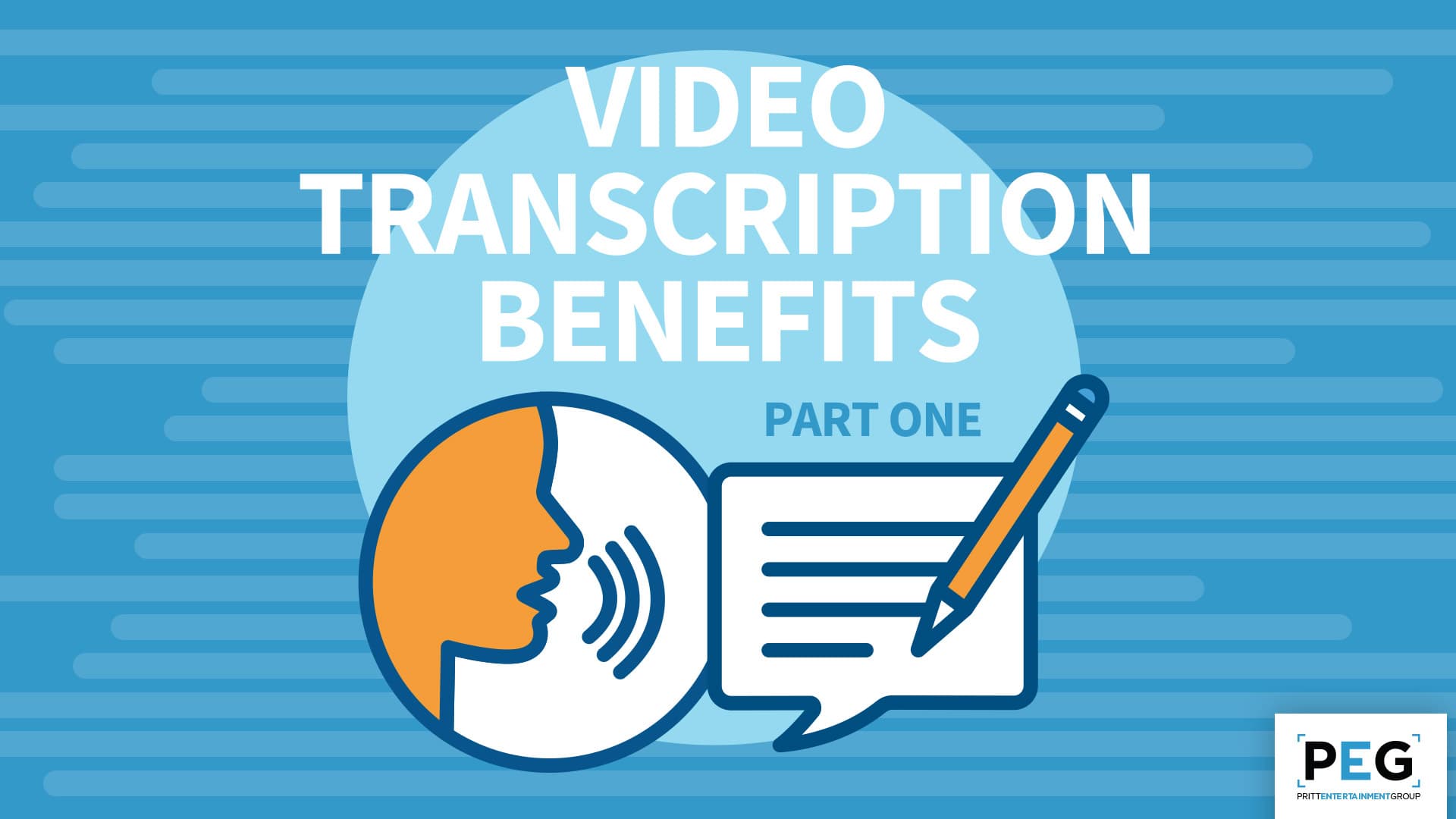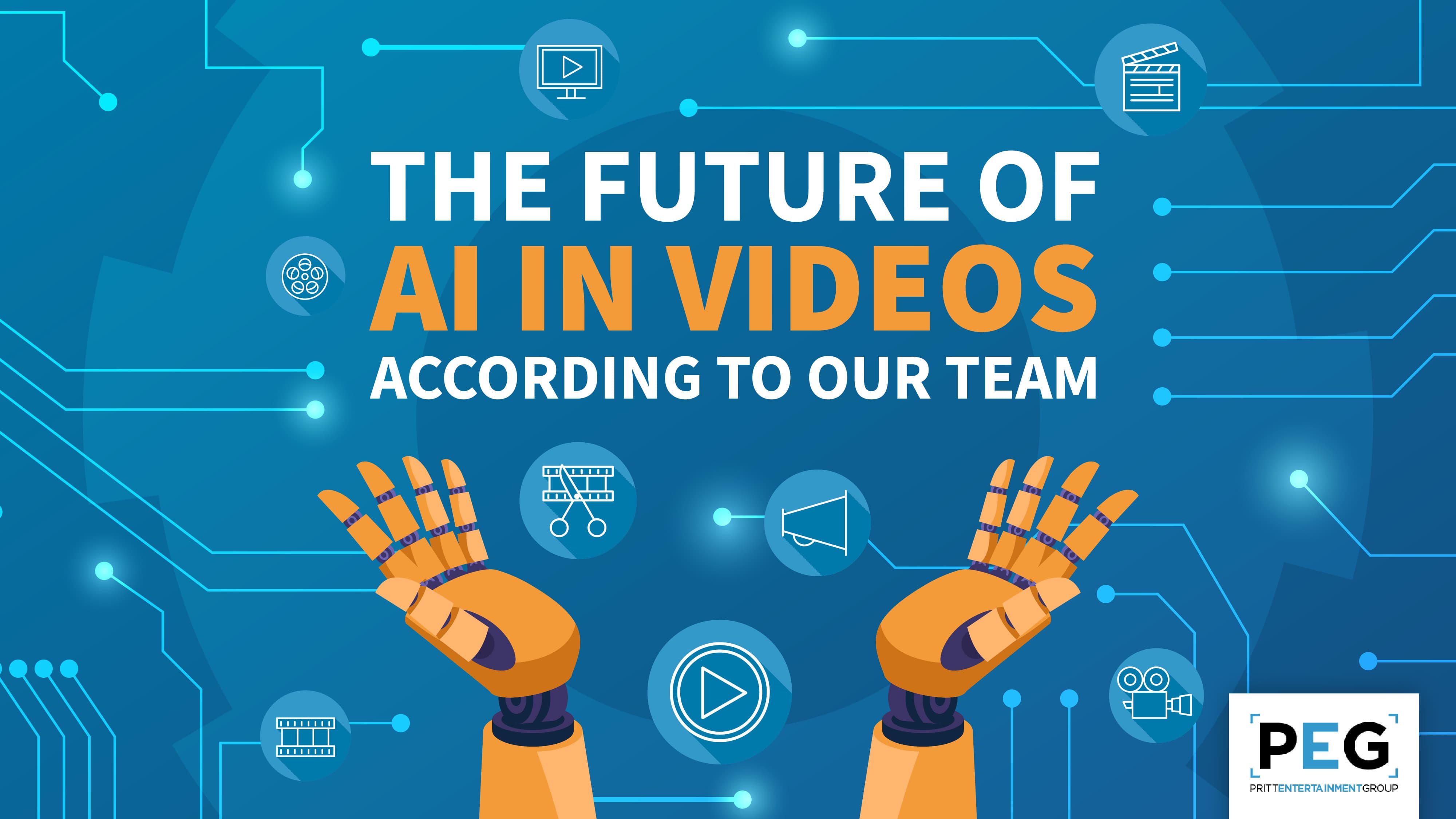The Future of AI in Video (According to AI)
Jump To Part Two of our AI in Video Series - The Future of AI (According to Our Team)
Artificial Intelligence (AI) is already making a significant impact on video production, and this trend is expected to continue in the coming years. Here are a few ways in which AI is expected to impact video productions:
- Automated Editing: AI can help automate the video editing process by using machine learning algorithms to analyze footage and determine the most important parts of the video. This can save a lot of time and effort in the editing process.
- Personalized Content: With the help of AI, video producers can create personalized content that is tailored to the individual preferences of each viewer. This can be achieved by using machine learning algorithms to analyze viewer data and make recommendations for personalized content.
- Real-time Video Analysis: AI can help analyze video in real-time, which can be particularly useful for live events such as sports or concerts. This can help video producers capture the most exciting moments and create compelling content for viewers.
- Improved Visual Effects: AI can be used to improve the quality of visual effects in video productions. For example, machine learning algorithms can be used to create realistic CGI characters or to enhance the realism of explosions and other special effects.
- Automated Captioning: AI can help automate the process of adding captions to video content, which can make video productions more accessible to a wider audience.
Overall, AI is expected to play an increasingly important role in video production, making it faster, more efficient, and more personalized than ever before.
Automated Editing:
Automated editing is one of the most significant ways in which AI is impacting video production. With the help of machine learning algorithms, AI can analyze raw footage and make decisions about how to cut and arrange the footage to create a final product that meets the desired specifications.
There are several ways in which AI can automate the editing process:
- Shot Selection: One of the most time-consuming aspects of video editing is going through hours of footage to select the best shots. AI can analyze footage and automatically select the most relevant shots based on factors such as framing, lighting, and action.
- Scene Detection: AI can automatically detect where one scene ends and another begins, which can make it easier to edit the footage into a cohesive narrative.
- Content Analysis: AI can analyze the content of the footage to identify the most important parts of the video, such as key moments, speeches, or interviews. This can help editors focus on the most important parts of the footage and create a more engaging final product.
- Automatic Transitions: AI can automatically add transitions between shots, such as cross-fades or dissolves, to create a more polished final product.
- Speed Adjustment: AI can automatically adjust the speed of the footage to create a more dynamic video. For example, AI can speed up footage of a car chase to make it more exciting or slow down footage of a dramatic moment to build tension.
Automated editing can save video producers a significant amount of time and effort in the post-production process, allowing them to create high-quality videos more efficiently than ever before.
Personalized Content:
Personalized content is another area where AI is having a significant impact on video production. With the help of machine learning algorithms, video producers can create content that is tailored to the individual preferences and interests of each viewer.
Here are some ways in which AI can be used to create personalized content:
- User Data Analysis: AI can analyze data about each viewer, such as their search history, watch history, and demographic information, to identify their interests and preferences. This information can then be used to recommend videos that are relevant to the viewer.
- Content Recommendation: AI can use the data analysis to recommend videos to viewers based on their past viewing behavior. For example, if a viewer has watched a lot of cooking videos, AI can recommend more videos on cooking.
- Dynamic Video Creation: With the help of AI, video producers can create dynamic videos that change based on viewer input. For example, a video could have multiple storylines that viewers can choose between, allowing them to create their own personalized viewing experience.
- Interactive Elements: AI can be used to create interactive elements within videos, such as quizzes, polls, or games. These elements can engage viewers and create a more personalized experience.
- Targeted Advertising: AI can analyze viewer data to identify the most relevant advertisements to show to each viewer. This can increase the effectiveness of advertising and make it more appealing to viewers.
By creating personalized content, video producers can increase engagement and create a more satisfying viewing experience for viewers. This can lead to increased loyalty and a stronger connection between the viewer and the brand.
Real-Time Video Analysis:
Real-time video analysis is another area where AI is having a significant impact on video production. With the help of machine learning algorithms, video producers can analyze video in real-time, which can be particularly useful for live events such as sports or concerts.
Here are some ways in which AI can be used for real-time video analysis:
- Action Detection: AI can analyze live footage and identify key moments, such as a goal being scored or a touchdown being made, and alert the camera operator to focus on those moments.
- Object Detection: AI can detect and track objects in real-time, such as a ball in a sports game or a car in a race, and use that information to provide a more engaging viewing experience.
- Camera Control: AI can analyze live footage and adjust camera angles and positions to capture the most exciting moments of an event. This can create a more dynamic viewing experience for viewers.
- Real-Time Transcription: AI can transcribe live speech in real-time, making it easier for viewers to follow along with what is being said.
- Social Media Integration: AI can analyze social media feeds in real-time to identify trending topics and incorporate them into the live broadcast. This can make the broadcast more relevant and engaging for viewers.
By using AI for real-time video analysis, video producers can create a more dynamic and engaging viewing experience for viewers. This can lead to increased engagement and a stronger connection between the viewer and the brand.
Improved Visual Effects:
Improved visual effects are another area where AI is having a significant impact on video production. With the help of machine learning algorithms, video producers can create more realistic and sophisticated visual effects that were previously difficult or impossible to achieve.
Here are some ways in which AI can be used to improve visual effects:
- Object Removal: AI can be used to remove objects from a scene, such as wires or green screens, which can create a more seamless and polished final product.
- Object Insertion: AI can be used to insert objects into a scene, such as a character or a product, which can create a more engaging and dynamic video.
- Image Restoration: AI can be used to restore old or damaged footage, such as removing scratches or fixing color balance, which can make the footage look more polished and professional.
- Facial Animation: AI can be used to create realistic facial animation, such as lip syncing or facial expressions, which can make animated characters look more lifelike.
- Virtual Reality: AI can be used to create immersive virtual reality environments that can be explored by viewers. This can create a more engaging and interactive viewing experience.
By using AI for visual effects, video producers can create more sophisticated and polished videos that are more engaging and compelling for viewers. This can lead to increased engagement and a stronger connection between the viewer and the brand.
Automated Captioning:
Automated captioning is another area where AI is having a significant impact on video production. With the help of machine learning algorithms, video producers can create captions for videos automatically, which can be particularly useful for large volumes of content or for accessibility reasons.
Here are some ways in which AI can be used for automated captioning:
- Speech Recognition: AI can be used to automatically transcribe spoken words in videos and convert them into text captions. This can save time and resources compared to manual transcription.
- Multilingual Support: AI can be used to automatically translate captions into multiple languages, which can make videos more accessible to viewers who do not speak the same language as the original video.
- Customization: AI can be used to customize captions to match the preferences of individual viewers, such as font size, color, and positioning. This can make videos more accessible and user-friendly for viewers.
- Contextual Understanding: AI can be used to understand the context of a video and use that information to create more accurate and relevant captions. For example, if a video is about a technical subject, AI can use technical jargon and vocabulary to create more accurate captions.
- Accessibility Compliance: Automated captioning can help video producers comply with accessibility regulations and make their content more accessible to viewers with hearing impairments.
By using AI for automated captioning, video producers can create more accessible and user-friendly videos, while also saving time and resources. This can lead to increased engagement and a stronger connection between the viewer and the brand.
(This blog post was fully-written by ChatGPT. Our team will be giving their input on AI in video in coming soon!)




